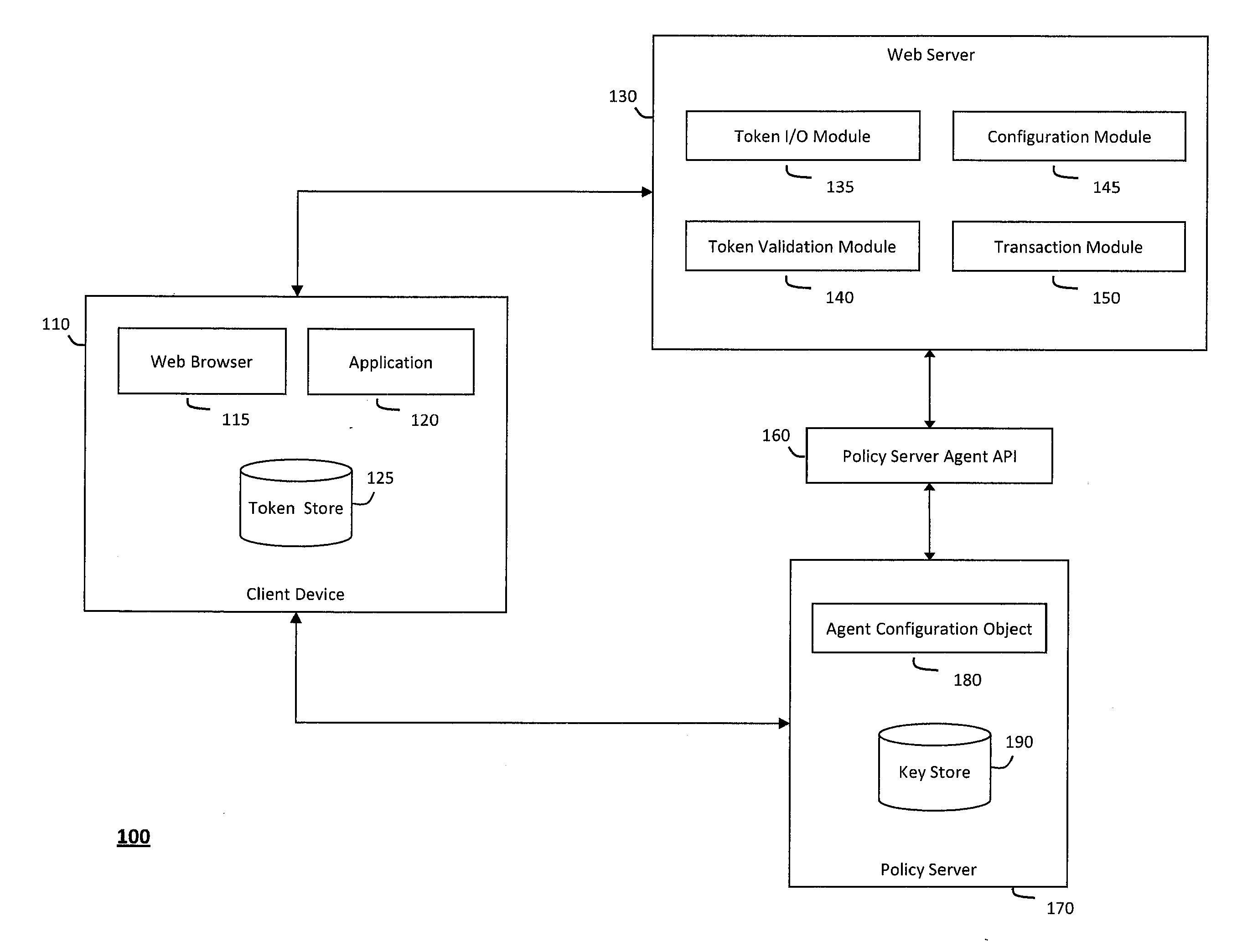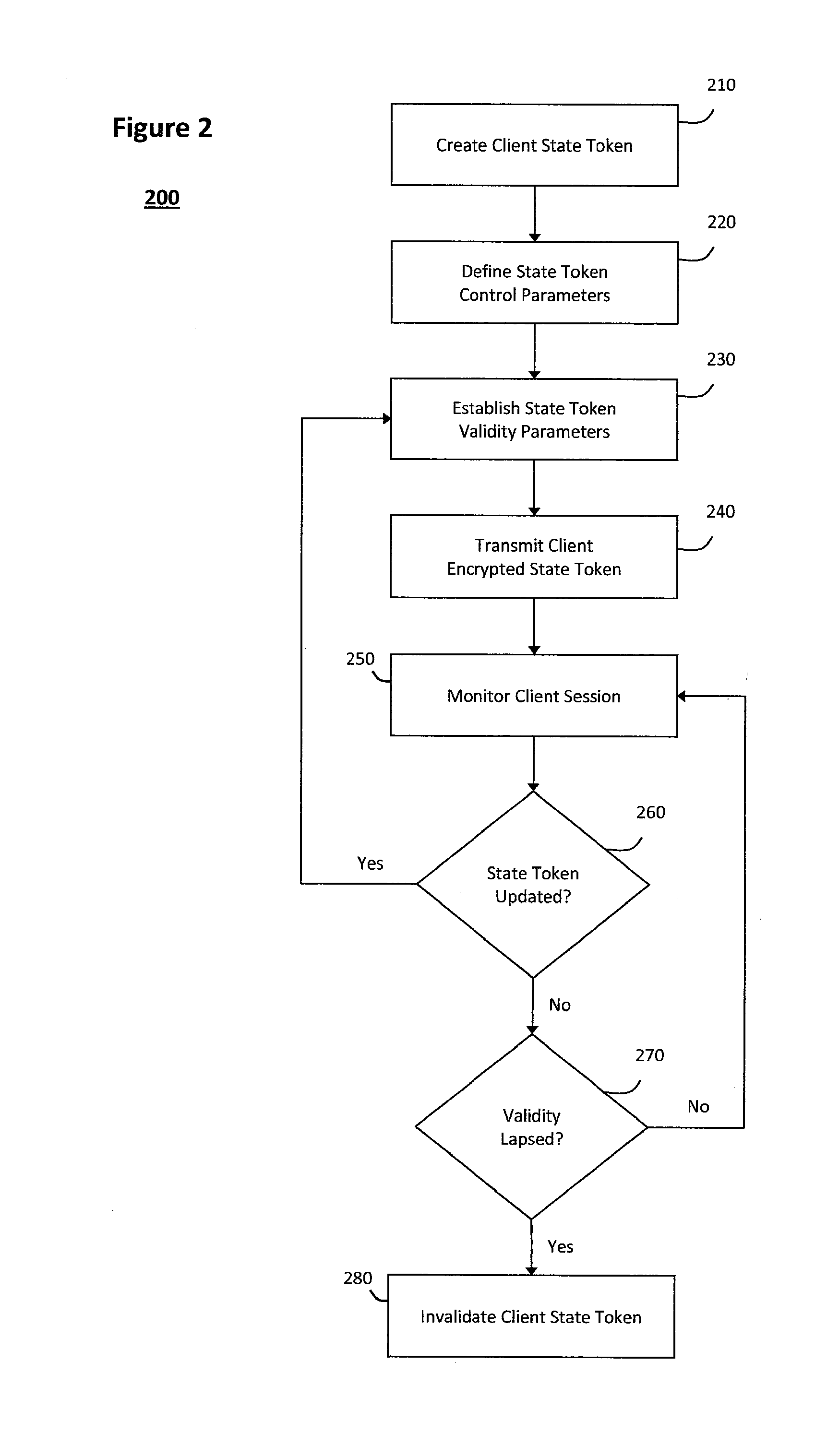System and method for controlling state tokens
a state token and token technology, applied in the field of system and method for controlling state tokens, can solve the problems of introducing significant security, management and compliance challenges in the work environment, defeating the purpose of secure logon procedures, and existing systems tend to fall short in effective balancing security
- Summary
- Abstract
- Description
- Claims
- Application Information
AI Technical Summary
Benefits of technology
Problems solved by technology
Method used
Image
Examples
Embodiment Construction
[0018]According to one aspect of the invention, FIG. 1 illustrates an exemplary system 100 that can secure sensitive state tokens, link multiple state tokens to one another, integrate various different systems or applications with state tokens, and otherwise control state tokens. In particular, the system 100 illustrated in FIG. 1 may generally provide various mechanisms to secure sensitive application state tokens, link one application state token to one or more other state tokens that represent certain communication sessions or identities, and maintain application state tokens to integrate various different systems or applications. For example, as will be described in further detail herein, the system 100 may override schemes that one or more applications use to manage state information, wherein the system 100 may operate in a framework that can enforce various state management overrides to define policies that provide fine-grained control over any default or other semantics that ...
PUM
 Login to View More
Login to View More Abstract
Description
Claims
Application Information
 Login to View More
Login to View More - R&D
- Intellectual Property
- Life Sciences
- Materials
- Tech Scout
- Unparalleled Data Quality
- Higher Quality Content
- 60% Fewer Hallucinations
Browse by: Latest US Patents, China's latest patents, Technical Efficacy Thesaurus, Application Domain, Technology Topic, Popular Technical Reports.
© 2025 PatSnap. All rights reserved.Legal|Privacy policy|Modern Slavery Act Transparency Statement|Sitemap|About US| Contact US: help@patsnap.com



